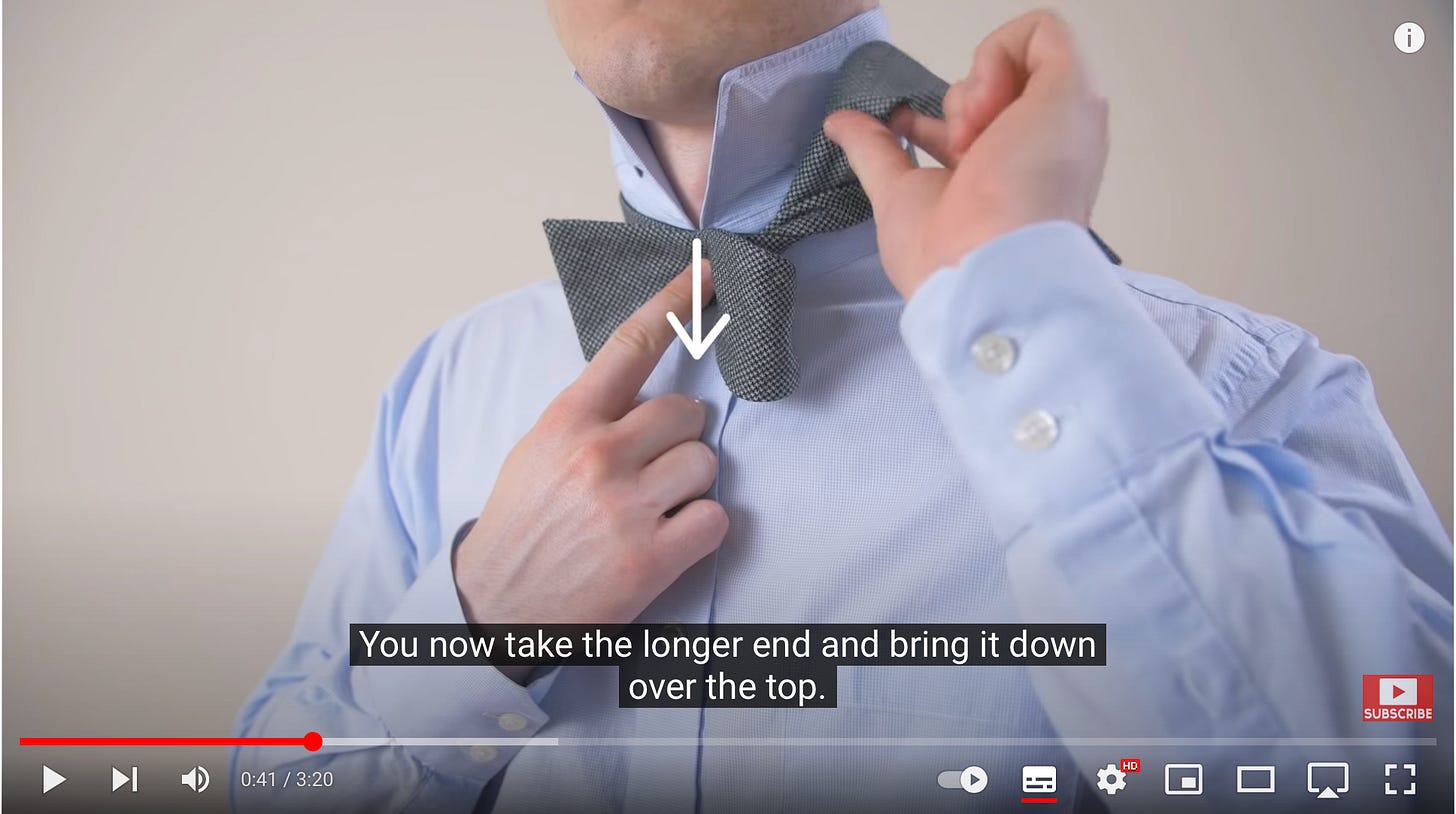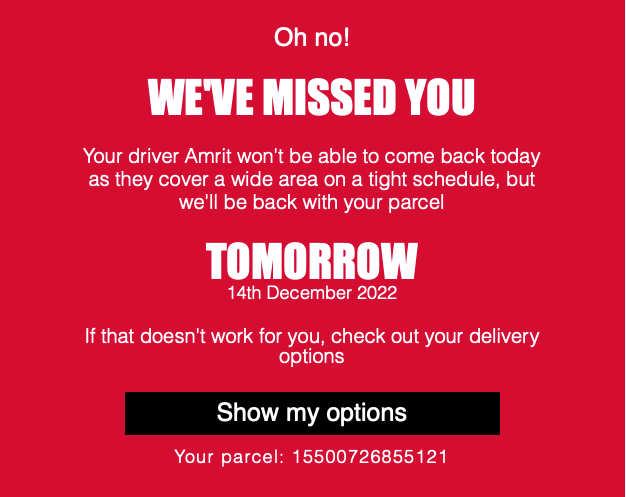You’re reading CX Stories, a newsletter about customer experience innovation. If you want to join the 4000+ lovely people who receive it every month, just enter your email address below.
‘OK fine, I’ll wear one’
Five words which led to one of the most bizarre customer experiences I’ve had in years – and one which showed how expensive a bad customer experience can be to deliver.
After protracted negotiations, the decision was made to dress up for our Christmas party.
A fierce debate started as to whether it’s acceptable to wear a clip-on bow tie (as I’ve always done) or whether, at the age of forty, I should really be tying my own by now. After several days of lobbying, I caved.

Having left it ludicrously late to buy – and crucially learn how to do up – a bow tie, I went to the John Lewis website as a place I knew would deliver something good quality at short notice. (n.b. I don’t normally name the companies involved, but it feels important this time given their previous reputation for customer experience excellence).
Easy search, easy purchase, easy order. Extra paid for next-day delivery given the urgency of my ill-educated position.
And then, that thing happened. You know the thing. When the email arrives saying the package is out for delivery. When the time gets closer to your delivery slot. When the little map shows the driver nearby. When the van pulls up outside, pauses for a second, looks at your Christmas lights being on, your house lights being on, your car being in the driveway, you stood waving at the window beckoning him in… then drives off. When you get the ‘Oops, we’re sorry we missed you, looks like you were out!’ email.
Reader, it won’t surprise you to know I was livid, and it won’t surprise you to know I phoned John Lewis immediately. But I warn you, the next part of the story does not paint me in a good light.
I was greeted by the official theme tune of 2022: ‘Due to unexpectedly high call volumes we’re extremely busy and your call may not be answered for fifteen minutes’. This became twenty, then thirty, but I was invested now.
Thirty-five minutes in and someone answered. I explained the situation, explained my unhappiness, and asked for a refund on the next-day delivery. Given I’d paid an extra £7.50 for this, and it hadn’t happened, this felt to me like a fairly straightforward request.
Not so, it turned out.
‘We can offer you £5, and as a John Lewis gift voucher.’
Now let me be very clear. I know that it’s only £2.50, and it shouldn’t really matter, but the principle of it just felt completely wrong.
‘Well, that doesn’t seem right. Firstly, I’ve paid £7.50, and you haven’t delivered it. Secondly, I’ve now been on the phone for forty minutes when you could have refunded this automatically. Thirdly, I don’t want a voucher. You don’t sell a lot for £5, so I’m just going to end up having to spend more with you, aren’t I?’
‘Ok sir, I understand. I’m going to have to talk to my manager about this’
Another five minutes goes by, during which time I contemplated what I’d become and whether I’d ever admit this conversation to anyone else.
‘Hello sir, thank you for holding. I’ve discussed this with my manager, and we are now happy to offer you a voucher for £7.’
‘Sorry…. £7?’
‘Yes sir. Our system will only allow us to process a gift card for £7’
(I will give a handsome prize for anyone who replies or comments and correctly guesses my reaction at this point.)
Anyone with any sense would have hung up. But this had become a classic case of sunk-cost bias.
‘I’m sorry sir, my manager might not be available for another fifteen minutes’
‘I’ll wait’
Ten more minutes passed until the voice reappeared on the phone and confirmed that, having discussed it with her manager (and presumably the IT team to lift the weirdly-specific £7 limit), they were now – an hour into the call – very happy to offer me a £10 cash refund.
And they wonder why they have exceptionally high call volumes.

Many contact centres are currently short-staffed, have high staff turnover, and have a high proportion of their team working from home. This is creating a perfect storm of low capability and slow learning under the pressure of lots of waiting customers. I suspect this accounts for some of my experience on the day, both in terms of the wait time and the colleague making some bad decisions.
However, this was made worse by a lack of colleague empowerment. It was one of those calls where both of us knew the situation was ridiculous, yet she didn’t have the trust or authority to be allowed to do the right thing. Frustrating for both of us, and I suspect for her manager who’ll be drowning under an onslaught of Teams messages asking for help.
The bowtie eventually arrived the next day. And just in case I hadn’t noticed being handed the package, I received a lovely email a few minutes later telling me the package was waiting for me at home. With a photo of me in it.

If something goes wrong, own it, explain it, and resolve it. Petty squabbling over £3 makes no one look good.
Least of all me
Thanks for reading this article, I really hope you enjoyed it. You can subscribe to my monthly newsletter below, and find me in tweet form @johnjsills, in picture form on Instagram @CX_Stories, or in work mode at The Foundation
